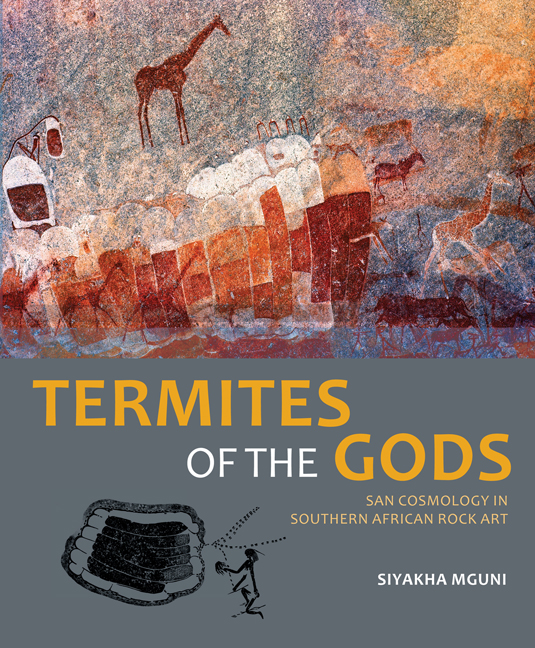Book contents
- Frontmatter
- Dedication
- Contents
- Acknowledgements
- Foreword
- Maps
- Explanatory notes
- Preface: Searching the pasts
- Introduction
- Chapter 1 Ancient mysteries on rocks
- Chapter 2 Meaning in San rock art
- Chapter 3 Tricksters, potency and dance
- Chapter 4 Ways of seeing San rock art
- Chapter 5 Probing deep into formlings
- Chapter 6 Formlings and San cosmological belief
- Chapter 7 Symbolic theatres of San cosmos
- Notes
- List of maps and figures
- Picture credits
- References
- Index
- Frontmatter
- Dedication
- Contents
- Acknowledgements
- Foreword
- Maps
- Explanatory notes
- Preface: Searching the pasts
- Introduction
- Chapter 1 Ancient mysteries on rocks
- Chapter 2 Meaning in San rock art
- Chapter 3 Tricksters, potency and dance
- Chapter 4 Ways of seeing San rock art
- Chapter 5 Probing deep into formlings
- Chapter 6 Formlings and San cosmological belief
- Chapter 7 Symbolic theatres of San cosmos
- Notes
- List of maps and figures
- Picture credits
- References
- Index
Summary
Research and writing on ancient rock art has had a long and chequered history. Discovery and reports on San rock art were sporadic prior to the turn of the nineteenth century. In Zimbabwe, the first report was in 1891 by the English traveller Theodore Bent, when he visited the northeastern parts of Zimbabwe. He reported that in one cave where the locals had taken him, ‘all sorts of wild animals were wonderfully well executed; the figures of warriors with poised spears and quivers of arrows are, however grotesque’. Two further reports appeared in the early 1900s as other writers followed suit. Even then, professional writings came only later, from the 1920s onwards. In describing eNanke, Richard Hall was one of the earliest professional archaeologists in southern Africa to report on San rock paintings. Given the sustained attention on San rock art, it is unclear whether reported observations were due to fortuitous encounters or the calculated curiosity of Western observers. Whatever the case may be, San rock art had captivated writers as early as the mid-eighteenth century. In South Africa, Ensign Beutler was the first in 1752 to describe San paintings along the Kei River in the Eastern Cape and suggest Bushman authorship. Several decades later, others mentioned paintings in various parts of the Cape in a trend that continued and spread to other regions until the mid- 1800s. Rock art reports in Namibia, particularly in the Kunene region, and in Botswana in the Ngamiland region, appeared in the late 1800s and into the 1900s. In 1909 Lieutenant von Jochmann was the first to report the paintings in the Brandberg and Erongo Mountains, the largest concentration of San rock art in Namibia, and further reports appeared from the 1920s onwards. In Botswana, the explorer David Livingstone reported in 1857 on a single mountain called Sorila in Ngamiland; it was the Tsodilo Hills, the country's well-known San rock art locality. Because he never visited them and reported on heresay, it is unsurprising that he did not mention the rock art. It was the German geographer Siegfried Passarge who first reported on and recorded some paintings at Tsodilo in 1893 and in the early 1900s.
- Type
- Chapter
- Information
- Termites of the GodsSan cosmology in southern African rock art, pp. 1 - 11Publisher: Wits University PressPrint publication year: 2015



